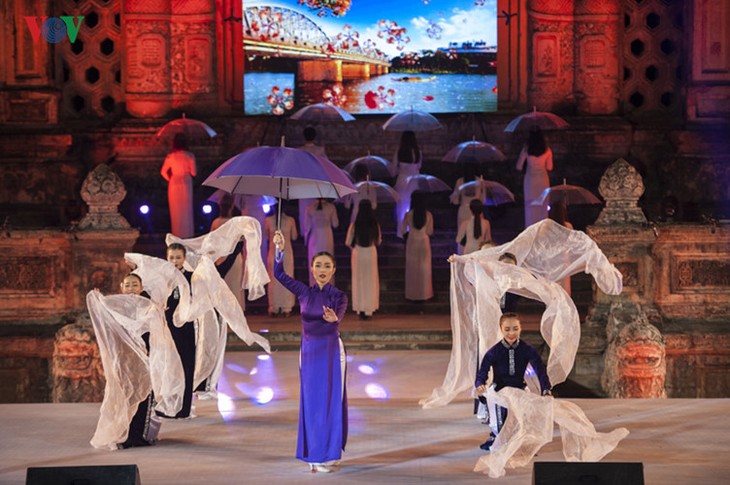(VOVworld) - The Hanoi Ao Dai (traditional long dress) Festival 2016 took place at the Thang Long–Hanoi Imperial Citadel in mid-October. The beauty of Hanoi’s old quarter, Vong village’s young rice, Hang Trong folk paintings, and other themes were expressed through ao dai created by 32 designers.
National costumes embody the cultural uniqueness of a country. Korea has the hanbok. Japan boasts its kimono. Scotland is distinctive for its kilt. And Vietnam is proud of its ao dai, which represents feminine charm and gentleness. According to designer Minh Hanh, some attractive and audacious dresses were introduced at the recent Ao Dai festival. The images of beautiful girls, the Temple of Literature, the Turtle Tower, Hanoi’s old quarter, and political propaganda icons were printed on the ao dai, blending modernity and tradition. Obviously, some ao dai designers are inspired by fine arts. Designer Minh Hanh said: “For me, Hanoi offers all the factors needed for fashion development. Ao dai typifies culture which encompasses fashion.”
 |
| An ao dai show during the festival |
At the Hanoi Ao Dai Festival 2016, designers, artisans, artists, and Hanoi lovers disseminated the best of a thousand-year-old Hanoi city. People’s Artist Tien Hoi said: “This is the first time Hanoi has organized this ao dai festival. It’s hilarious. Ao dai has been part of Vietnam’s history. Vietnamese people, male or female, young and old alike, all should wear ao dai, the national attire.”
Ao dai have gone beyond the national boundary, representing Vietnam globally. People’s artist Tra Giang said: “I wear Vietnamese ao dai whenever I go to a foreign film festival or event. Foreign reporters take photos of me. When the public watch Vietnamese films and see female artists wearing ao dai, they better understand Vietnam and its people.”
Born in the 17th century, ao dai contain the soul and character of the Vietnamese and remain popular today. Nguyen Thi Ha, a Hanoian said: “Vietnamese women look beautiful in ao dai. I wear ao dai for important events. Previously, it was worn every day but now it is mainly seen at formal ceremonies and celebrations or such as weddings and festivals.”